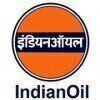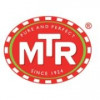Quality Assurance/Quality Control Manager
100+ Quality Assurance/Quality Control Manager Interview Questions and Answers

Asked in Sun Pharmaceutical Industries

Q. What is the basic difference between UV-Vis and IR spectroscopy?
UV-Vis spectroscopy measures absorption of light in the visible and ultraviolet range, while IR spectroscopy measures absorption of light in the infrared range.
UV-Vis spectroscopy is used to determine the concentration of a sample, while IR spectroscopy is used to identify functional groups in a molecule.
UV-Vis spectroscopy uses a UV-Vis spectrophotometer, while IR spectroscopy uses an IR spectrophotometer.
UV-Vis spectroscopy is commonly used in the analysis of organic compou...read more

Asked in Neel Metal Products

Q. Why is the panel checker or fixture color red, and what is its purpose?
Panel checker or fixture colour is red to indicate a failed or faulty component.
Red is commonly associated with danger or warning, making it a suitable color for indicating issues.
Red color stands out and catches attention easily, helping to quickly identify problems.
Using red for failed or faulty components helps in efficient quality control and prevents defective products from reaching customers.
Examples: Red indicator lights on a control panel, red markings on a fixture to...read more
Quality Assurance/Quality Control Manager Interview Questions and Answers for Freshers

Asked in Tekni-Plex

Q. What challenges do you face in implementing ISO 9001:2015?
Implementing ISO 9001:2015 can face challenges in terms of resource allocation, employee engagement, and cultural change.
Resource allocation: Allocating sufficient resources, such as time, budget, and personnel, to effectively implement ISO 9001:2015 can be a challenge.
Employee engagement: Ensuring that employees understand and actively participate in the implementation process can be challenging. This may require training, communication, and creating a culture of quality.
Cul...read more

Asked in Godrej Interio

Q. What is 3 M, What is 7qc tool , what is kaizen ,5 a, 5 M veneer , what is 7qc &qa , poka yoke, micrometer, dawning ect
The question covers various quality control tools and techniques used in manufacturing and production processes.
3M refers to the three key principles of quality management: Muda (waste), Mura (unevenness), and Muri (overburden).
7QC tools are a set of quality control techniques used to identify and solve production problems. Examples include Pareto charts, fishbone diagrams, and control charts.
Kaizen is a Japanese term for continuous improvement. It involves making small, incr...read more

Asked in Indian Oil Corporation

Q. If you are in a rural area working for IOCL and have a family emergency at home, what would you do?
I would inform my supervisor and request for leave to attend to the emergency.
Inform supervisor immediately
Request for leave to attend to emergency
Ensure handover of responsibilities to a colleague
Stay in communication with team to ensure work is covered

Asked in Sun Pharmaceutical Industries

Q. When Out-Of-Specification (OOS) results are obtained, how are they processed further?
When OOS results are obtained, they need to be processed further to determine the cause and take appropriate actions.
Investigate the root cause of the OOS result
Review the testing procedures and equipment used
Check for any potential errors or deviations
Perform retesting or additional testing if necessary
Document all findings and actions taken
Notify relevant stakeholders and management
Implement corrective actions to prevent future OOS results

Asked in Monnet Group

Q. What is safety? What is the prime factor to safety management?
Safety is the state of being protected from harm or danger. The prime factor to safety management is risk assessment and mitigation.
Safety is the responsibility of everyone in an organization
Safety management involves identifying potential hazards and taking steps to prevent accidents or injuries
Risk assessment and mitigation are key factors in safety management
Effective communication and training are essential for promoting safety in the workplace
Regular safety audits and in...read more

Asked in Stryker

Q. What is the difference between quality control and quality assurance?
Quality control focuses on identifying defects in the final product, while quality assurance focuses on preventing defects from occurring.
Quality control involves inspecting and testing the final product to identify defects.
Quality assurance involves implementing processes and procedures to prevent defects from occurring.
Quality control is reactive, while quality assurance is proactive.
Quality control ensures that the final product meets the specified requirements.
Quality ass...read more
Share interview questions and help millions of jobseekers 🌟


Asked in Monnet Group

Q. What is Quality? Why did we control it in organizations?
Quality is meeting or exceeding customer expectations. We control it to ensure consistency and customer satisfaction.
Quality is the degree of excellence of a product or service
It is meeting or exceeding customer expectations
Quality control ensures consistency and customer satisfaction
It involves monitoring and testing products or services to ensure they meet standards
Quality assurance involves preventing defects before they occur
Examples include ISO 9001 certification, Six Si...read more

Asked in Sun Pharmaceutical Industries

Q. What is heavy metal and what it's advantage.?
Heavy metal is a type of dense metal with high atomic weight. It has various industrial and medical applications.
Heavy metals are used in industries such as construction, electronics, and transportation.
They are also used in medical treatments such as chemotherapy and radiation therapy.
However, heavy metals can be toxic and harmful to human health if not handled properly.
Examples of heavy metals include lead, mercury, cadmium, and arsenic.

Asked in Indian Oil Corporation

Q. 5 flow measuring device And level measuring device
Flow measuring devices are used to measure the rate of flow of a fluid, while level measuring devices are used to measure the level of a substance in a container.
Flow measuring devices include orifice plates, flow meters, and ultrasonic flow meters.
Level measuring devices include float switches, capacitance level sensors, and ultrasonic level sensors.

Asked in MTR Foods

Q. BRC or ISO 22000: Which is better regarding food safety systems?
BRC focuses on product safety and quality, while ISO 22000 emphasizes a comprehensive food safety management system.
BRC (British Retail Consortium) is more prescriptive, detailing specific requirements for food safety and quality.
ISO 22000 is a broader framework that integrates various food safety management principles, including HACCP.
BRC certification is often preferred by retailers, while ISO 22000 is recognized globally and applicable across the food supply chain.
For exam...read more

Asked in Home Credit Finance

Q. How many QC tools are there, and what are their purposes?
There are seven basic QC tools used for process improvement and problem-solving.
The seven basic QC tools are: Cause-and-effect diagram, Check sheet, Control chart, Histogram, Pareto chart, Scatter diagram, and Stratification.
These tools are used to identify, analyze, and solve quality-related problems in a systematic and structured manner.
For example, a control chart can be used to monitor a process and detect any variations or abnormalities, while a Pareto chart can help pri...read more

Asked in Sun Pharmaceutical Industries

Q. How many types of columns are there?
There are several types of columns used in various fields, such as construction, chemistry, and data analysis.
In construction, columns can be classified as steel columns, concrete columns, or wooden columns.
In chemistry, columns are used in chromatography techniques, such as gas chromatography and liquid chromatography.
In data analysis, columns refer to the vertical sections of a table or spreadsheet, containing specific types of data.

Asked in Bill Forge

Q. What is the difference between CNC and DNC?
CNC stands for Computer Numerical Control and DNC stands for Direct Numerical Control.
CNC is a manufacturing process where machines are controlled by computers to produce precise and complex parts.
DNC is a method of controlling machines where a central computer sends numerical data directly to the machine.
CNC machines are typically used in large-scale manufacturing, while DNC is used for smaller-scale production.
CNC machines require programming for each individual part, while...read more

Asked in Amazon

Q. How would you test real-time apps on a mobile phone and write test cases?
Real-time apps on mobile can be tested by creating test cases based on user scenarios and using automation tools.
Identify user scenarios and create test cases accordingly
Use automation tools like Appium or Selenium for testing
Test for network connectivity and performance
Test for real-time data updates and notifications
Test for compatibility with different mobile devices and operating systems

Asked in TCS

Q. What is the difference between navigate to and go to URL?
Navigate to is a method used to move between pages within a website, while go to URL is used to directly access a specific webpage.
Navigate to is used to move between pages within a website, while go to URL is used to directly access a specific webpage.
Navigate to is typically used in automated testing to simulate user behavior, while go to URL is used to access a specific page for testing purposes.
Examples of navigate to include clicking on links or buttons within a website,...read more

Asked in John Deere

Q. What was your area of improvement in your last appraisal?
My area of improvement in my last appraisal was time management.
I struggled with prioritizing tasks and meeting deadlines.
I implemented a time management system to better organize my workload.
I learned to delegate tasks when necessary to ensure timely completion.
I improved my ability to estimate the time required for different tasks.
I actively sought feedback from colleagues and supervisors to identify areas for improvement.

Asked in Zydus Lifesciences

Q. What is the quality control process for capsules?
Quality control of the capsule involves ensuring its physical, chemical, and microbiological properties meet the required standards.
Physical inspection for defects, such as cracks or discoloration
Chemical analysis to confirm the correct composition and dosage
Microbiological testing to ensure the absence of harmful bacteria or fungi
Verification of packaging and labeling information
Regular monitoring and documentation of quality control processes

Asked in Lupin

Q. What is HPLC?
HPLC stands for High Performance Liquid Chromatography. It is a technique used to separate, identify, and quantify components in a mixture.
HPLC is a powerful analytical technique used in various industries such as pharmaceuticals, food and beverage, environmental analysis, and forensic science.
It involves the separation of components in a liquid mixture using a stationary phase and a mobile phase.
The stationary phase is typically a column packed with a solid material, while t...read more

Asked in Tata Advanced Systems

Q. How do you transfer data from a laptop to a microcontroller?
Data can be transferred from laptop to microcontroller using a USB cable or a serial communication protocol.
Connect the microcontroller to the laptop using a USB cable or a serial communication protocol such as UART or SPI.
Use a software tool such as a terminal emulator or a programming environment to establish a connection between the laptop and the microcontroller.
Transfer the data from the laptop to the microcontroller using the software tool.
Verify the data transfer by ch...read more

Asked in TCS

Q. What is the difference between Smoke testing and Sanity testing?
Smoke testing is a quick and shallow test to check if the software is stable enough for further testing. Sanitary testing is a more thorough test to check if the software meets the required standards.
Smoke testing is done to check if the software is stable enough for further testing.
Sanitary testing is done to check if the software meets the required standards.
Smoke testing is a quick and shallow test.
Sanitary testing is a more thorough test.
Smoke testing is usually done at t...read more

Asked in Strix Systems

Q. What is the difference between an Access Point and a station?
An access point is a wireless networking device that creates a wireless local area network, while a station is a device that connects to the access point to access the network.
Access point is a wireless networking device that creates a wireless local area network (WLAN)
Station is a device that connects to the access point to access the network
Access point is typically connected to a wired network and acts as a bridge between wireless and wired networks
Examples of access point...read more

Asked in Cadila Pharmaceuticals

Q. What is the difference between QMS and Quest?
QMS stands for Quality Management System, while Quest is not a specific term in the context of quality assurance/quality control.
QMS refers to a set of policies, processes, and procedures implemented to ensure that products or services meet quality standards.
QMS focuses on the overall management of quality within an organization.
Examples of QMS include ISO 9001 certification and Six Sigma methodologies.
On the other hand, 'Quest' is not a recognized term in the quality assuran...read more
Asked in APT Controls And Appliances

Q. 1.What is 6 sigma and application in industry? 2. What BIS standard for Appliances?
1. 6 Sigma is a data-driven approach to quality management. 2. BIS standard for Appliances is IS 302-2-24.
6 Sigma aims to reduce defects and improve quality by identifying and removing the causes of errors and minimizing variability in manufacturing and business processes.
It uses statistical methods to measure and analyze process performance and identify areas for improvement.
BIS standard IS 302-2-24 specifies safety requirements for household appliances such as refrigerators...read more

Asked in Tata Advanced Systems

Q. What is serial communication and different modes of communication
Serial communication is a method of transmitting data one bit at a time over a communication channel.
Serial communication is used to connect devices such as computers, printers, and modems.
Different modes of serial communication include asynchronous, synchronous, and isochronous.
Asynchronous communication sends data in individual bytes with start and stop bits, while synchronous communication sends data in blocks with a clock signal.
Isochronous communication is used for real-...read more

Asked in Bill Forge

Q. What do you mean by Lean manufacturing?
Lean manufacturing is a systematic approach to identifying and eliminating waste in the production process.
Focuses on continuous improvement
Aims to increase efficiency and reduce costs
Involves all employees in the process
Uses tools such as value stream mapping and 5S
Examples include Toyota Production System and Kaizen

Asked in BDR Pharmaceuticals International

Q. Blend unifomity calculation and how to select die.
Blend uniformity calculation and die selection for QA/QC Manager role.
Blend uniformity calculation involves determining the homogeneity of a mixture.
It is important to select the appropriate die for the blend to ensure consistent tablet weight and hardness.
Factors to consider when selecting a die include tablet size, shape, and desired release profile.
Die selection should also take into account the properties of the active ingredient and excipients used in the blend.
Regular t...read more

Asked in Asia Pulp & Paper

Q. How can you reduce the variable cost of new products?
To reduce variable cost of new products, focus on optimizing the manufacturing process and sourcing cheaper raw materials.
Optimize the manufacturing process to reduce waste and increase efficiency
Source cheaper raw materials without compromising on quality
Negotiate better deals with suppliers
Implement cost-saving measures such as energy-efficient equipment
Use data analysis to identify areas for improvement
Consider outsourcing certain aspects of production to lower-cost countr...read more
Asked in New Swan Components

Q. What is the difference between piercing and punching?
Piercing involves making a hole in the body using a needle, while punching involves using a tool to remove a piece of tissue.
Piercing is typically done with a needle, while punching uses a tool with a sharp edge.
Piercing is usually less invasive and has a shorter healing time than punching.
Examples of piercing include ear piercing, nose piercing, and belly button piercing. Punching is used in procedures such as skin grafting and body modification.
Interview Experiences of Popular Companies
Top Interview Questions for Quality Assurance/Quality Control Manager Related Skills
Calculate your in-hand salary
Confused about how your in-hand salary is calculated? Enter your annual salary (CTC) and get your in-hand salary

Reviews
Interviews
Salaries
Users